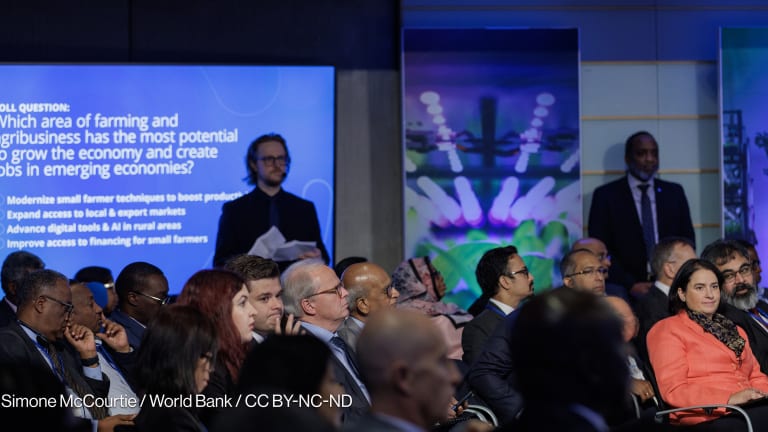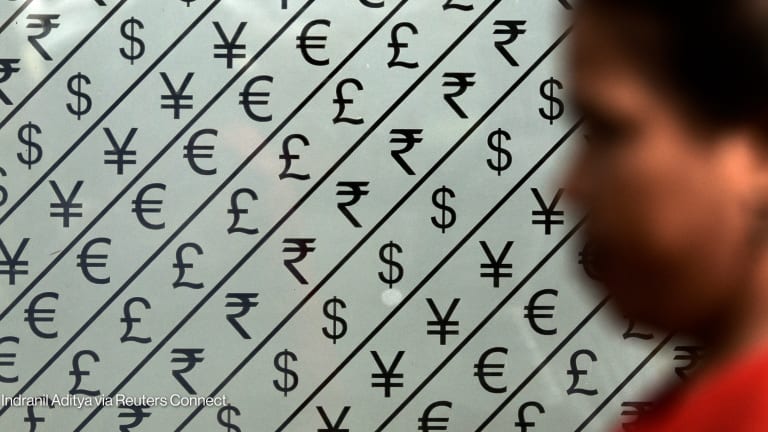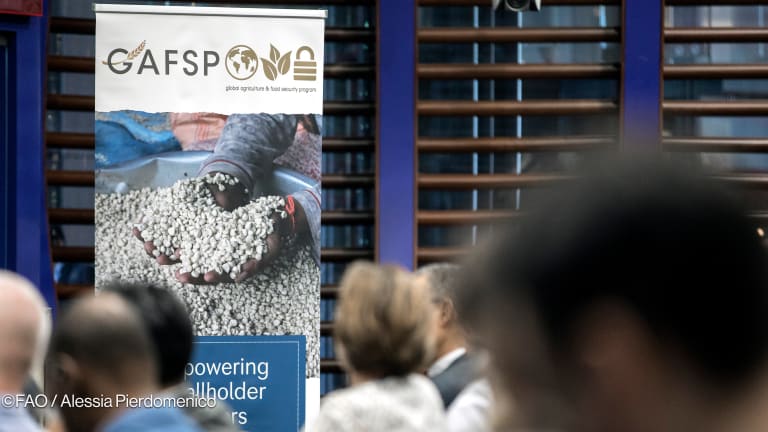
Going local is the best way to achieve the World Bank’s goal of ending extreme poverty in 17 years, says Joachim von Amsberg, the bank’s vice president of concessional finance and global partnership.
For the International Development Association, that means investing in projects in 82 of the poorest countries, where millions are waiting to be lifted out of extreme poverty.
Doing that is easier said than done, admits Von Amsberg, who oversees IDA replenishment.
IDA is trying to find the best solutions for the challenges that the World Bank’s fund for the poorest will surely face ahead from countries that are soon graduating from the agency’s supervision but are not yet ready to work with other bank facilities, and then there are the hard-to-succeed fragile and conflict-affected states.
Von Ambserg shares his thoughts on these issues in an exclusive interview with Devex:
The Development Committee has endorsed the vision to end extreme poverty and boost shared prosperity. In the case of IDA, how will this vision be operationalized?
These targets give the World Bank a level of sharpness and concreteness that have not been there before. Using IDA differently is central for achieving those goals. When I say using IDA differently, that’s a discussion that is still beginning. But I think it means asking at the level of each country program: What investment of IDA resources that will have the highest impact in achieving and contributing to the goals?
Do we have a timeline on when this vision will really have an impact on the ground?
We’re quite impatient, so the country partnership strategies for India was just discussed a couple of weeks ago. And it’s the first country strategy that explicitly refers and builds around these goals. Actually, we’re moving quickly. India is the first, but others will follow very quickly.
What is IDA’s own strategy?
IDA’s strategy is to invest in the 80 poorest countries in those programs and projects that can make the largest contribution toward achieving these goals. But which programs and projects these are depends on the particular development challenges of the country, and that’s what the World Bank and the country agree together in a country partnership strategy. That is the first building block.
The second building block is the public-private collaborations, and in particular the synergy between IDA and the International Finance Corp. IDA will work with countries to improve regulations, to put up some public infrastructure. IFC directly connects through that to bring in private investments to sectors which will then presumably attract other companies that will themselves invest [in] even without IFC support.
Based on World Bank data, there are 11 countries currently eligible under IDA where about 25 percent to more than 50 percent of the population live in extreme poverty. But these countries are estimated to graduate from IDA in the following years. How will IDA end extreme poverty when high-incidence countries eventually graduate from IDA?
We use different instruments and different financing mechanisms for supporting countries depending on their income level. The argument is that in middle-income countries, even though there are very large numbers of poor people, the country can afford financing at relatively more expensive market-based terms. If you take a country like Brazil or Mexico or even China, all these countries have poverty, but these countries are in terms of average income substantially better off than the IDA countries. Therefore, these countries do not depend on the very cheap money that comes from IDA, but they either finance themselves from markets or use the International Bank for Reconstruction and Development, which provides financing for middle-income countries.
Is there a transition support for graduating countries?
We are proposing to introduce such transition because we have countries that kind of fall in the gap between the two — IDA and IBRD. We are just in the current negotiation, proposing a window that would allow countries that are graduating from IDA but aren’t for whatever reason in a position to get support from IBRD to receive IDA support but essentially on harder term — meaning with less subsidy and at [an] interest rate that reflects the level of higher per capita income.
As some IDA-eligible countries soon graduate, the group’s next clients are the fragile and conflict-affected countries. How do you ensure that the allocation formula and the computation for selecting fragile states takes into account the unique situation of FCS?
Of the 82 IDA-eligible countries, five are expected to graduate this time. So it’s actually a modest number compared to the countries that still depend on IDA investment. Among those remaining countries are several fragile and conflict-affected states.
We are now discussing in the IDA context how to scale up investment in those countries. We are combining changes in the way we support projects, we prepare projects — being faster, being more flexible in terms of the requirements while ensuring monies are indeed used for the intended purpose. And combining those operational improvements with increased funding availability for those fragile and conflict-affected countries that have an opportunity for a turnaround. What I’m saying is that we don’t invest more simply because there are fragility and conflict in the country. We invest more, if and when, the opportunity is there to reduce fragility and conflict.
How does IDA identify fragile states that have the potential for a turnaround?
It’s a combination of objective assessments. We have a system for rating institutional capacity of countries. We have a special system for rating countries in conflict and fragility. Essentially, it’s a catalog of questions [by] which we screen countries performance. Very interestingly, the community of fragile and conflict-affected countries (g7+) is in the process of [defining] state-building and peace-building goals with indicators that are meant to measure progress. We are very supportive of this effort and have indicated that once those efforts have produced robust indicators, we could indeed use those as the basis for some of the funding decisions.
IDA has announced the key themes and focus for IDA-17 replenishment: inclusive growth, climate resilience, fragile states and gender equality. How exactly will these themes end extreme poverty and raise the income of the poorest of the poor?
Conflict, very clearly, can disrupt the past work in poverty reduction in countries which enjoy reasonable economic growth. Conflict undermines investment, undermines growth, and therefore, these countries get struck in the poverty trap. The focus of IDA will be on climate change adaptation, helping low-income countries build infrastructure, build agriculture systems and other public investments and reduce vulnerability to climate change. Gender has a very obvious link. If half of the population does not benefit from development and if the country does not use [the other] half to generate social and economic development, clearly the targets cannot be achieved simply because half of the population would not be reached the same way as the other half.
Lastly, on the inclusion, some countries more and others have less poverty reduction as a result of growth. Making sure for example that countries with resource wealth like oil or minerals use that wealth in a way that benefits the broad population, not just a small section of the elite.
Read more development aid news online, and subscribe to The Development Newswire to receive top international development headlines from the world’s leading donors, news sources and opinion leaders — emailed to you FREE every business day.








